Tl; dr;
- Positive customer interactions are crucial for business success, directly influencing customer satisfaction, retention, brand reputation, and the potential for referrals.
- Customer segmentation and personalized interactions are vital for creating relevant and engaging customer experiences that foster long-term relationships.
- Establishing omnichannel communication and continuously optimizing these channels are essential for meeting customer expectations and providing seamless support across all platforms.
- Actively seeking and collecting customer feedback, communicating with empathy, and ensuring staff are well-trained are key practices for maintaining positive customer interactions and building trust.
- Implementing feedback loops, particularly through easily accessible online surveys, is efficient for gathering customer insights that can inform and refine the customer interaction strategy and drive business improvements.

For businesses looking to charm their clientele, mastering the art of customer interactions is like finding the perfect match.
In this article, we'll dive into the secrets of segmenting audiences, the magic of personalization, and the power of omnichannel communication. Plus, we'll reveal how gathering feedback can be a game-changer.
By the end of this read, you'll have the know-how to make every customer interaction a stepping stone to success.
Importance of positive customer interactions
Customer interactions encompass every touchpoint you have with your customers, from initial engagement through support inquiries to post-purchase follow-ups. This includes both inbound and outbound contacts across various channels such as phone calls, emails, social media, and live chat.
Positive customer interactions are the bedrock upon which the long-term success of your business rests. They can make or break the digital customer experience (CX), influence customer retention, spur referrals, and significantly shape your brand's reputation and loyalty.
Customer interactions improve digital CX and customer satisfaction
A digital CX that stands out is often a direct result of engaging customer interactions. Engaging correctly means understanding the customer's needs and providing solutions in an efficient and personalized manner.
Your adeptness at these interactions, especially in digital contexts, contributes to smoother customer journeys and improved satisfaction rates.
Positive customer interactions reduce churn
The likelihood of a customer returning or continuing to use your service is greater when their interactions with you leave a positive impression.
Businesses that prioritize resolving issues with compassion and competence often see a lower churn rate. What can we say, customers stick around when they feel valued.
Positive customer interactions increase referrals
Your customers can become your best advocates. When they have a remarkable experience, they are more inclined to share it with others.
This word-of-mouth promotion is invaluable and can significantly increase your pool of potential leads without any additional cost to your marketing budget.
Positive interactions improve brand reputation and customer loyalty
Every interaction shapes your brand in the public eye. Consistently positive customer service experiences contribute to a strong brand reputation.
Over time, this leads to a loyal customer base, who are more likely to repurchase and recommend your brand to others due to their trust in your commitment to quality service.
How to categorize customer interactions?
Categorizing customer interactions allows you to effectively manage and respond to various types of customer engagement. Generally, you can segment these interactions into a few common types:
Inquiry:
Your customers will approach you with questions about your products or services. This signifies their interest or need for further information to help them make purchasing decisions. It’s crucial to provide accurate answers promptly to maintain their engagement and trust.
- Examples: Product information, availability, pricing, etc.
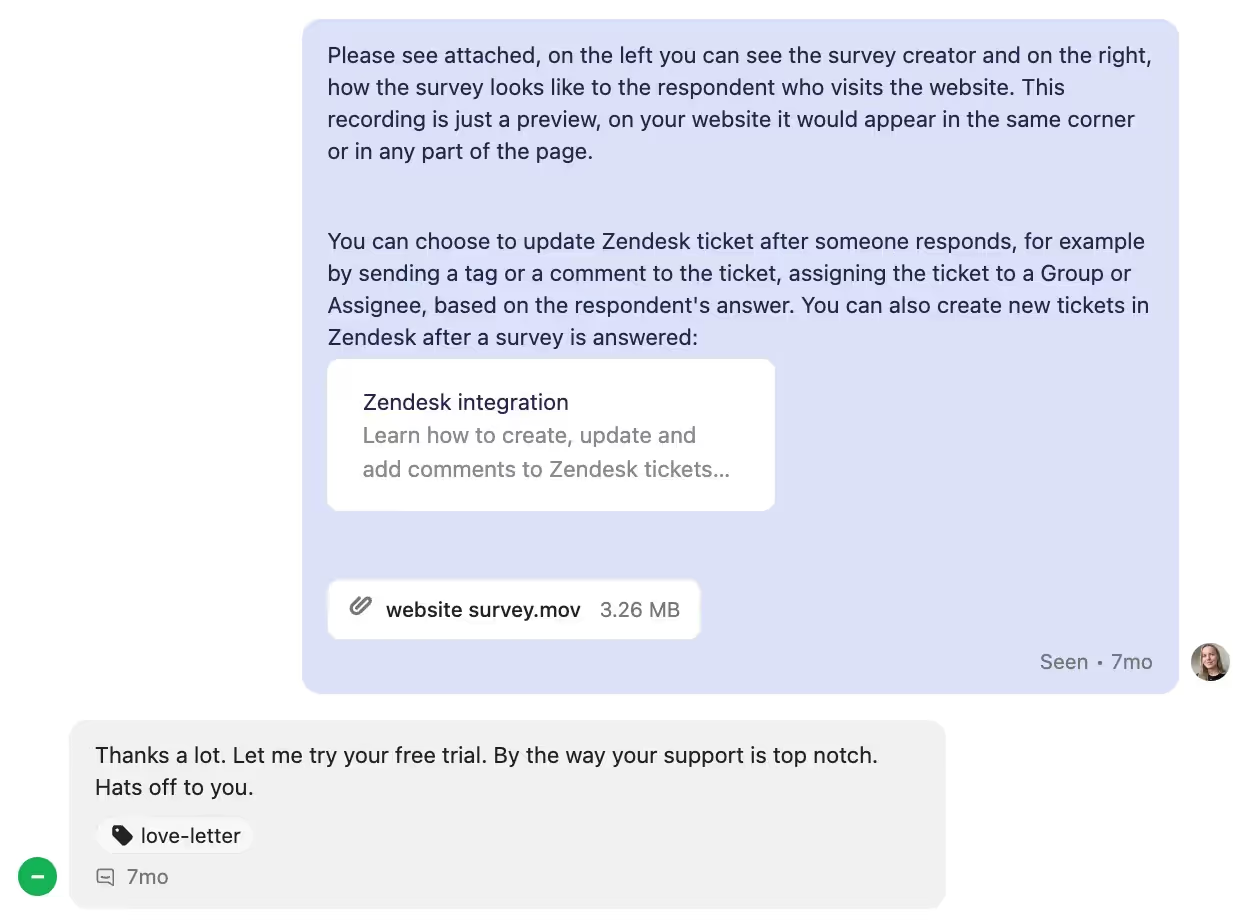
Support request:
Requests come in various forms, whether it's a query for additional services, customization, or a straightforward call for assistance. Addressing these requests efficiently can greatly enhance customer satisfaction and demonstrate your commitment to fulfilling their needs.
Involves more detailed assistance for troubleshooting issues or providing guidance.
- Examples: Technical support, account problems, service disruptions, etc.
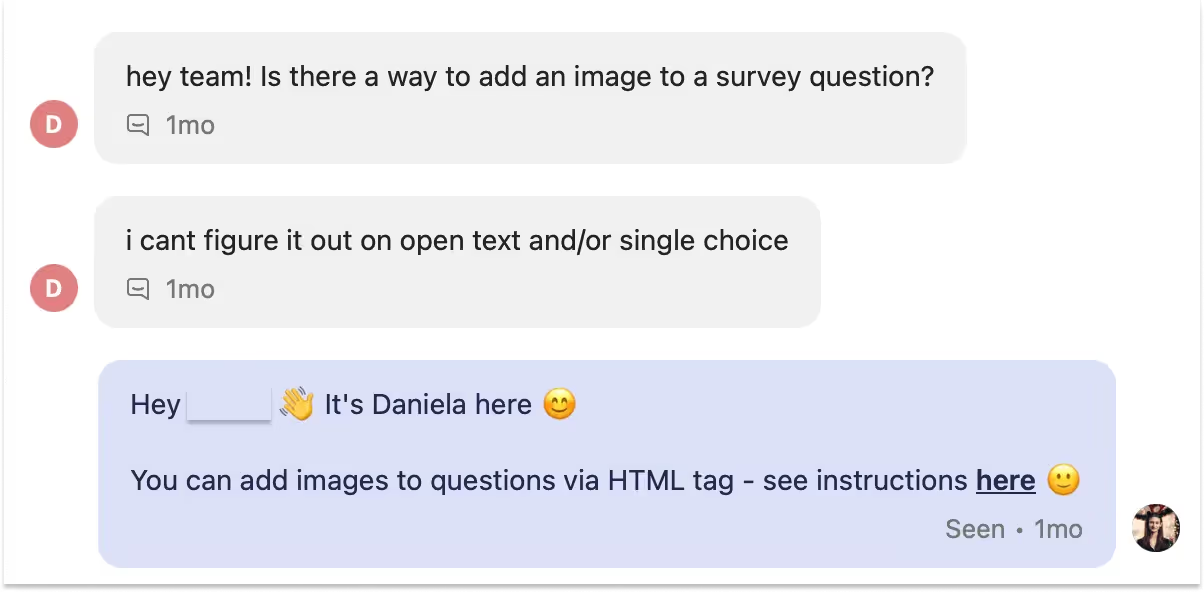
Feedback:
Receiving feedback is an invaluable aspect of customer interaction, providing insights into their experiences and perceptions of your business. Promptly acknowledging and thoughtfully considering feedback showcases your dedication to customer-driven growth.
Whether through surveys, reviews, or direct communication, embracing positive and negative feedback can lead to enhanced service offerings and a stronger, more responsive brand.
These interactions come from customers offering their insights or experiences.
- Examples: Product reviews, service critiques, suggestions, etc.
A Customer Satisfaction (CSAT) survey by Survicate
Customer complaints:
Handling complaints reflects your company’s dedication to service quality. Whether these are product issues or service mishaps, your response should be swift and solution-oriented. Acknowledging the issue and offering a resolution is key to turning a negative situation into a positive customer experience.
When customers are dissatisfied with your product or service and express their concerns.
- Examples: Unmet expectations, negative experiences, etc.
Praise:
When customers offer compliments, it’s an opportunity to solidify your brand reputation. Thank them genuinely and consider using positive feedback as testimonials while continuously striving for excellence to encourage more such interactions.
.avif)
Positive affirmations from customers who are happy with your service.
- Examples: Compliments, testimonials, positive reviews, etc.
To effectively categorize customer interactions:
- Define clear criteria for each category.
- Train your team to identify and sort interactions accordingly.
- Use a customer interaction management system that can help automate categorization.
Remember, the way you categorize these interactions can influence how you prioritize response and resource allocation. Always aim to be responsive and empathetic, regardless of the category.
Customer interaction strategy: best practices
Implementing effective customer interaction strategies is crucial for enhancing customer satisfaction and loyalty. Each of the following subsections provides actionable best practices to elevate your customer engagement.
Segment your customers
Segmentation allows you to cater to different groups' specific needs and preferences within your customer base. You can create targeted communication that resonates with each segment by analyzing purchase history, behavior, and demographics. This tailored approach boosts relevance and engagement.
Personalize customer interactions
CX personalization is key to making customers feel valued. Address customers by name, reference past interactions, and recommend products based on their history. Personalized touchpoints are often the difference between a one-time transaction and a lasting relationship.
Create feedback loops
Actively seeking and responding to customer feedback demonstrates that their opinions are vital to your business. Implementing a systematic approach to collecting, analyzing, and acting on this feedback, such as feedback loops, can drive improvements in your customer interaction strategy.
You can start by using survey software like Survicate to collect, manage, and analyze customer feedback on customer satisfaction, product features, or customer interactions.
Develop an omnichannel communication
Customers expect seamless interaction across multiple channels. Whether they reach out via social media, email, or phone, ensure that you provide consistent and effective communication. This omnichannel approach helps customers feel connected to your brand at all times.
Keep optimizing the process
Continuous improvement is essential. Regularly analyze interactions, identify areas for enhancement, and implement changes. By keeping optimization an ongoing priority, you can stay ahead of customer expectations and industry standards.
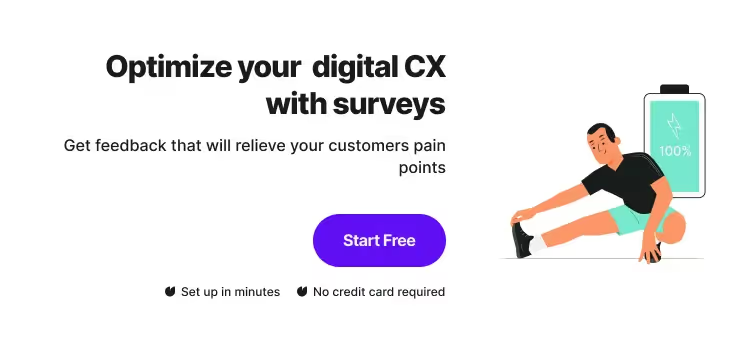
8 tips to make every customer interaction positive
Effective customer interactions are pivotal to the success of your business. Implementing the following strategies ensures that each touchpoint builds a positive relationship with your customers.
1. Know and understand your customers
Understanding your customers' needs, preferences, and behaviors is critical. Use analytics and customer data to inform your interactions and provide personalized service that resonates with your customers' individual needs.
2. Be empathetic
Convey empathy during customer interactions by acknowledging their feelings and showing compassion. Whether they are frustrated or thrilled, let them know they are heard and that their emotions matter to you and your business.
3. Talk like a human
Communicate in a way that's relatable and personable. Avoid jargon and scripted responses. Instead, opt for a friendly, conversational tone that makes customers feel comfortable and understood.
4. Ask for customer feedback and act on it
Regularly ask for feedback from your customers and make visible efforts to address their concerns and suggestions. This demonstrates value and commitment to continuous improvement.
5. Keep your word
If you make a commitment, whether it’s a delivery time or a follow-up call, ensure you fulfill these promises. Dependability builds trust and shows customers that they can rely on your business.
6. Be transparent
Honesty goes a long way in customer interactions. Be clear about your policies, services, and prices. Transparency fosters trust and reduces misunderstandings.
7. Use multiple communication channels
Offer support through a variety of channels, such as phone, email, live chat, and social media. This makes your business accessible, responsive to customer preferences and enhances customer experience.
8. Invest in your team’s training
Ensure your team has the skills and knowledge to deliver exceptional service. Ongoing training can empower your employees to handle customer interactions effectively and confidently.
Polish your customer interaction management with Survicate
Understanding and enhancing customer interactions is essential for any business aiming to thrive in the current market. You can significantly improve customer satisfaction and loyalty by segmenting customers, personalizing communications, and employing an omnichannel approach.
The crucial element in this process is a feedback loop—gathering and acting upon customer insights is what truly allows for a dynamic and responsive interaction strategy.
Survicate survey software emerges as an effective tool for achieving this. With its user-friendly interface and comprehensive analytics, Survicate enables businesses to easily create, distribute, and analyze customer surveys.
This platform facilitates a deeper understanding of customer needs and preferences, empowering companies to make data-driven decisions that elevate the customer experience.
So, if you're looking to refine your customer interaction strategy, Survicate offers a powerful yet effortless solution. Experience the benefits firsthand, sign up for a 10-day free trial that unlocks all the Business Plan features, and start transforming your customer interactions today.
Customer interaction management FAQs
What are the main channels for customer interactions?
When establishing a connection with your customers, the selection of the right communication channels is crucial. Below is a concise overview of businesses' primary channels to interact with customers.
Email: Email remains a cornerstone for customer communication. Its formal format allows for comprehensive messages and documentation.
Social Media: Platforms such as Facebook and Twitter have become vital for real-time customer interactions, allowing businesses to engage with customers publically and privately.
Phone: Telephone support offers immediate assistance and a personal touch, helping in issue resolution.
Live Chat: Websites equipped with live chat capabilities provide instant help to visitors and customers, facilitating swift problem-solving.
Self-Service Portals: Customers can access FAQs, knowledge bases, and forums to find answers independently.
In-Person: Face-to-face interactions, while traditional, foster strong relationships and personalized service.
Video Calls: Platforms like Zoom or Skype are great for more personal interaction, especially when in-person meetings are not feasible.
Here's how to prioritize these channels:
- Start by identifying where your customers are most active.
- Optimize your business presence on those selected channels.
- Ensure customer interactions on these channels are smooth and seamless.
By strategically employing these interaction channels, you set the stage to improve your everyday customer interactions, solidify trust, and maintain relationship longevity.
What is the customer interaction cycle?
Understanding the Customer interaction cycle is vital to developing a successful customer relationship. This cycle provides a structured approach for engaging with customers and nurturing long-term relationships.
Stages of the customer interaction cycle
- Awareness: You first need to capture the attention of potential customers. They must become aware of your brand and the solutions you offer. An initial contact or advertising campaign can serve to introduce your brand.
- Consideration: Once you've grabbed their attention, customers consider your products or services a viable solution for their needs. It's crucial to provide valuable information that helps them in their decision-making process.
- Acquisition: This stage involves the actual purchase or commitment from the customer. Your goal here is to make the acquisition process as seamless as possible to minimize friction.
- Retention: Post-purchase, your focus should shift to retaining the customer. You can use follow-up communications, support, and service to ensure they are satisfied with their purchase.
- Loyalty: Ultimately, satisfied customers can become loyal advocates for your brand. Loyalty is fostered through continuous engagement, exceptional service, and exceeding expectations.
Remember, each interaction with your customers is an opportunity to reinforce your brand's value and to build upon the customer relationship. Implementing these steps can lead to improved customer satisfaction and business growth.
What are real-life examples of customer interactions?
In managing customer interactions, consider a company's approach that might offer a refund to dissatisfied customers. Such businesses try to reduce customer frustration by using sympathy and empathy.
Imagine you encounter a streaming service, like Netflix, that employs data to personalize content. They use your viewing history to enhance your experience, demonstrating a strategic use of customer interaction data.
Marketing Interactions:
- Seeing and commenting on a branded social media advertisement.
- Reading store signage detailing product features.
Sales Interactions:
- Engaging with an assistant to find a specific product.
- Receiving a follow-up call or email after a service inquiry.
Customer Service Interactions:
- Live chat support during online shopping.
- Receiving personalized product recommendations.
Area Interaction Example Marketing Commenting on an ad: Social media engagement. Sales Product Inquiry: Assistance from staff. Customer Service Live Support: Real-time problem-solving.
Your interaction with a brand often starts before you even make a purchase. You might window shop or check reviews, engaging with the business without direct communication. Whether you're assessing options or resolving post-sale concerns, each of these instances is an opportunity for a company to excel in customer engagement.
What teams usually interact with customers?
Interfacing directly with clients, several key teams within a company are vital in providing ongoing support, shaping the customer experience and influencing business outcomes.
Customer Support Team
The customer service team is the frontline of support, often dealing with inquiries, complaints, and issues that customers face. This team's interactions are typically reactive, responding to customer-initiated contact.
To excel, customer service representatives should be adept at problem-solving, possess strong communication skills, and be knowledgeable about the company's offerings.
The key to this team's success is resolving issues promptly and effectively, ensuring customer satisfaction and loyalty.
Why customers reach out:
- for assistance with products or services,
- to resolve problems,
- or to get answers to their questions.
Communication channels: phone, email, live chat, and social media.
Customer Success Team
Unlike customer service representatives, the customer success team takes a proactive approach, focusing on customer retention and the customer's long-term success with the company's products or services.
To excel, the team should have a deep understanding of customer goals, regular check-ins to track progress, and the ability to anticipate customer needs, thereby fostering positive, long-term customer relationships.
The main reasons for interactions include:
- onboarding new customers,
- helping customers realize the full value of their purchase,
- providing ongoing support to encourage renewal and upselling opportunities.
Communication channels: scheduled calls, email follow-ups, webinars, and personalized consultations.
Sales Team
The sales team's interactions are primarily focused on converting prospects into customers. Sales professionals can excel in customer interactions by having a thorough knowledge of the product, understanding the customer's business and needs, and building a rapport that is based on trust and reliability.
The key to success for this team is effective communication and negotiation skills, as well as the ability to listen to and address customer concerns.
Ultimately, the sales team's goal is to drive revenue while establishing a foundation for a potential long-term relationship.
The reasons for their interactions include:
- presenting product information,
- negotiating deals,
- closing sales.
The sales process often involves multiple touchpoints, such as phone calls, emails, in-person meetings, and product demos.
Each of these teams plays a distinct but complementary role in the customer's journey. They can collectively contribute to a seamless and positive customer experience by leveraging their unique positions and skill sets.








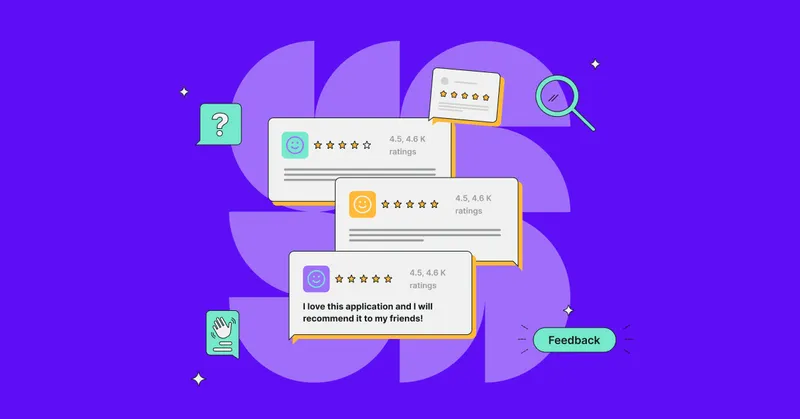
.webp)
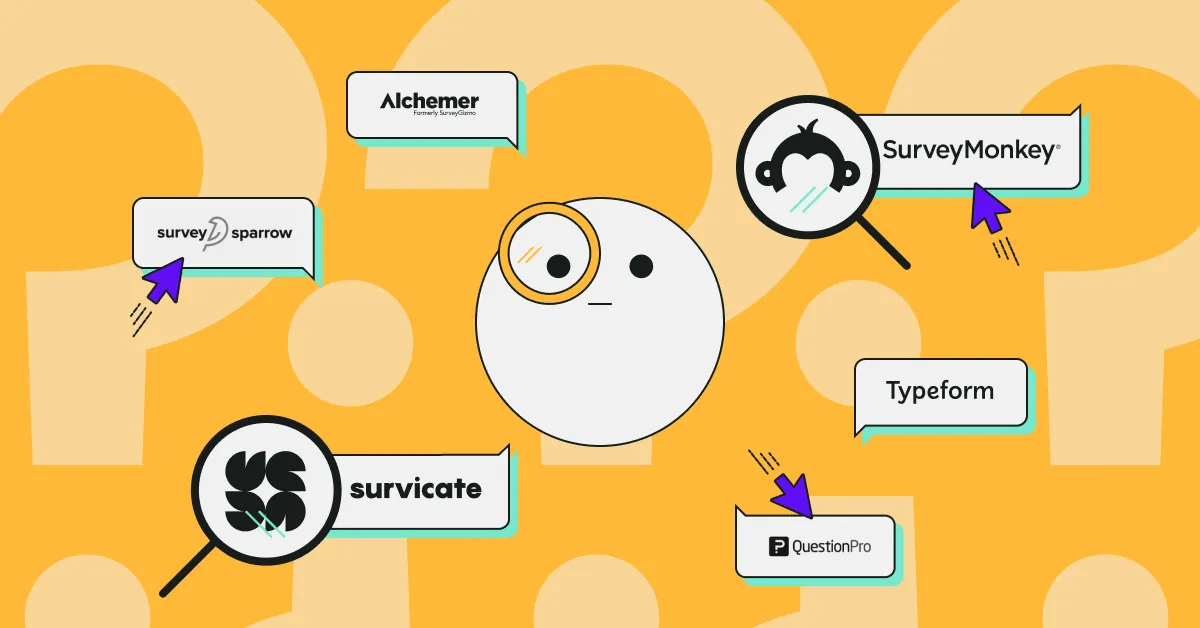
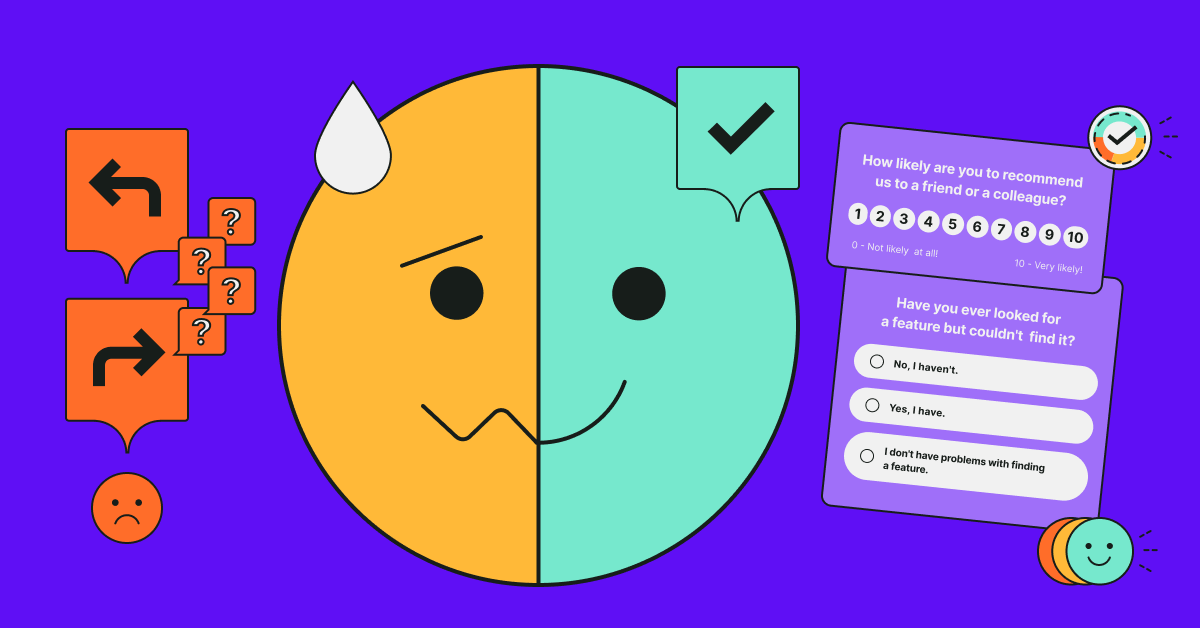

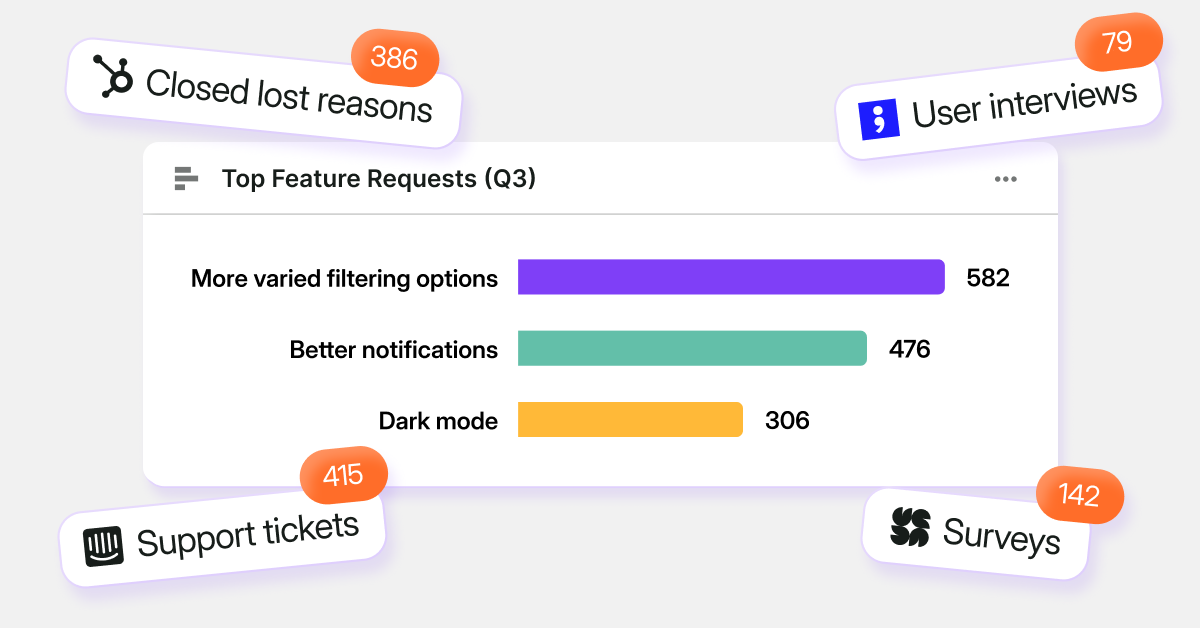
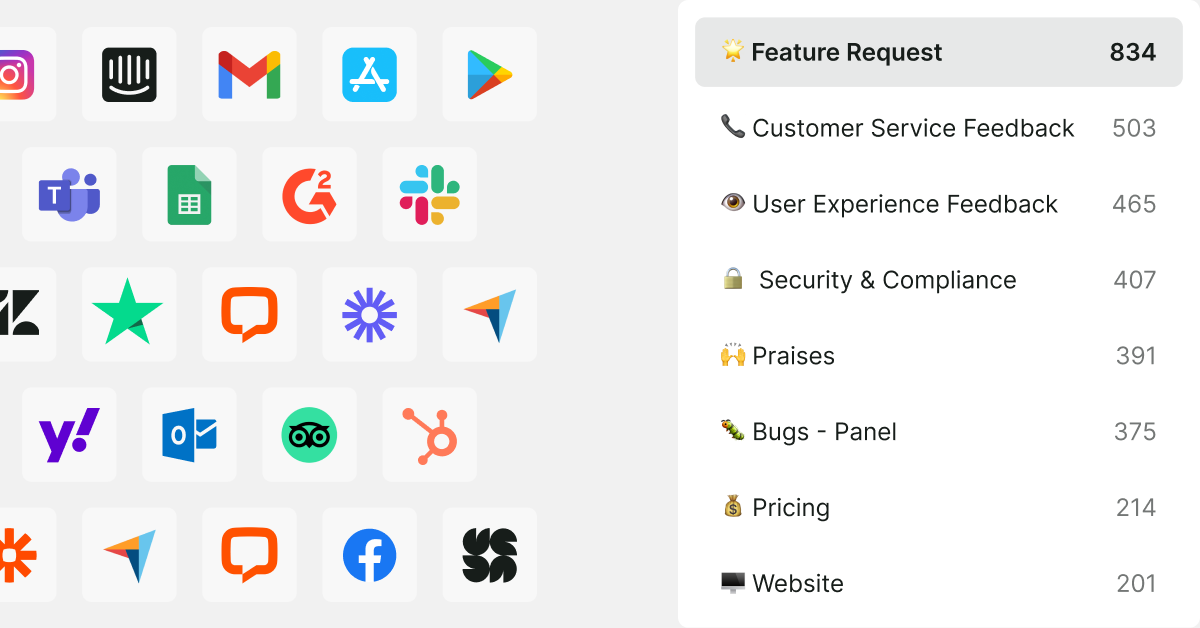
.svg)

.svg)



